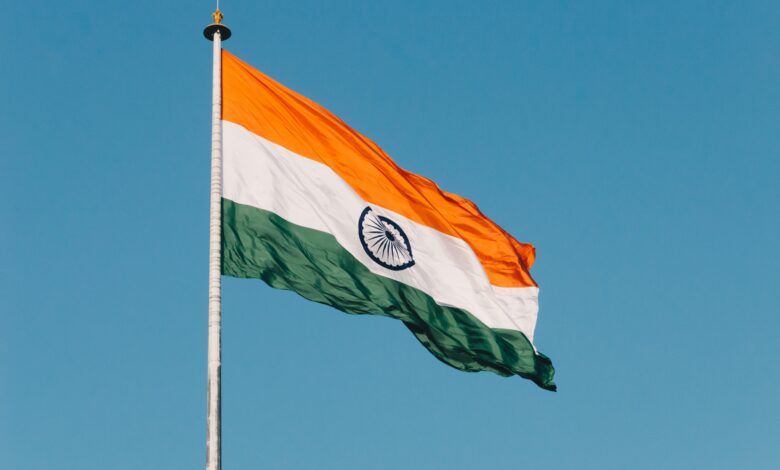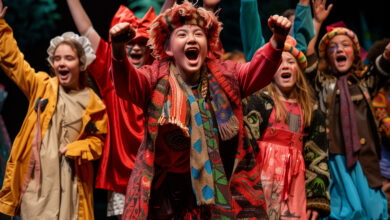Rising demand for Indian language classes at school
As the country’s Indian population grows, so does demand for Indian languages like Hindi, Punjabi and Gujarati to be taught at school.

Demand for Indian languages to be taught at secondary school is rising as the country’s Indian population grows.
Currently, no Indian languages are listed as NCEA subjects. However, some schools are offering Indian languages as part of their localised curriculum due to community demand.
Read the latest print edition of School News online HERE.
Last year, census results showed that in 2023, the Indian population in Aotearoa New Zealand outpaced the Chinese population to become the third largest ethnic group in the country. This made Hindi the country’s fourth most spoken language. Punjabi was ranked as our ninth most spoken language, however it grew 45.1 percent between 2018 and 2023, making it the fastest growing language in that period.
Still, opportunities to learn Indian languages like Hindi, Punjabi and Gujarati in our public education system are rare, say Indian community leaders, though demand is high. Most families come to community-run language classes, say leaders. One of these is the school at Auckland Indian Association’s Mahatma Gandhi Centre, run entirely with volunteer teachers and with little financial support.
Former president of the New Zealand Indian Central Association, Narendra Bhana, told RNZ that “the demand is definitely there” for Indian language classes.
“At the moment, we have nearly 100 kids coming to learn languages and culture every Sunday.”
Bhana hopes that at least Hindi will be incorporated into the education system. He says “New Zealand is now a multicultural society, especially Auckland. We need language options for these children.”
Fourth-generation Punjab Indian New Zealander Navtej Randhawa, former National Party candidate, has publicly called for Indian languages to be included in the curriculum.
Related story: Are AI detection tools biased against English language learners?
“Community-led initiatives… are vital, but they are limited in reach and capacity. There is no systemic provision by the Ministry of Education for Indian heritage languages, despite the Indian diaspora being one of the oldest and fastest growing in New Zealand, with a history stretching back 135 years.
“Without structured support, children are left reliant on informal and under-resourced community efforts. We need meaningful investment and recognition.”
School responses
Some schools currently offer Indian language classes for their students as a response to community demand.
Papatoetoe North School and Papatoetoe High School are two schools currently offering Hindi language classes.
At Papatoetoe North, two bilingual Hindi classes are available for students in Years 3 to 6. The school population is around 50 percent Pasifika, 30 percent Indian or Fijian Indian and 20 percent Māori, said Principal Stan Tiatia.
“The school needs to reflect the community, rather than the other way around. The value of Hindi needs to be developed, given the rise in population of speakers.”
Tiatia said the response had been positive, and students learned to see how learning a heritage language can support English learning. However, Tiatia noted the school struggled with providing a curriculum.
“There’s no support, no resources available for Hindi bilingual education… we’ve had to access directly from India or try to access what we can locally.”
Papatoetoe High School principal Vaughan Couillault said Hindi language classes had been available at the school for over a decade due to strong community demand, as there is a significant Indo-Fijian population. However, it is only available up to Year 10 students as Hindi is not an NCEA subject.
“We haven’t got that infrastructure in place at the moment, but that’s the thing about a curriculum – it always has the opportunity to evolve over time,” said Couillault.
According to MoE data on language class enrollment, Japanese is the most popular Asian language, with Chinese second and Korean growing rapidly. However, no Indian languages are listed as a subject.
President of the New Zealand Association of Language Teachers, Juliet Kennedy, said schools should create curriculum pathways for all heritage and community languages.
Acting general manager of MoE’s Te Poutāhū | Curriculum Centre, Hayley Welch, said “schools usually select languages that suit the interests, resources and needs of the school and community.
“The ministry remains committed to reflecting New Zealand’s diversity in education… we are interested in how the national curriculum might support broader language inclusion in the future, and we welcome ongoing engagement with communities on issues like this.”









